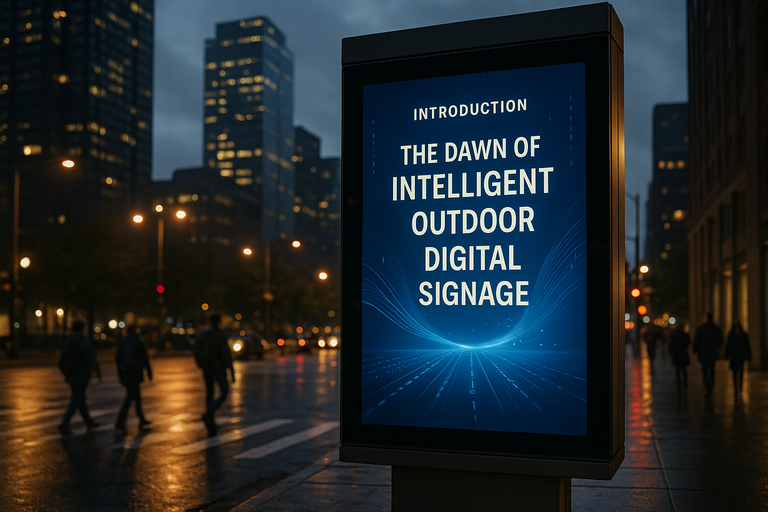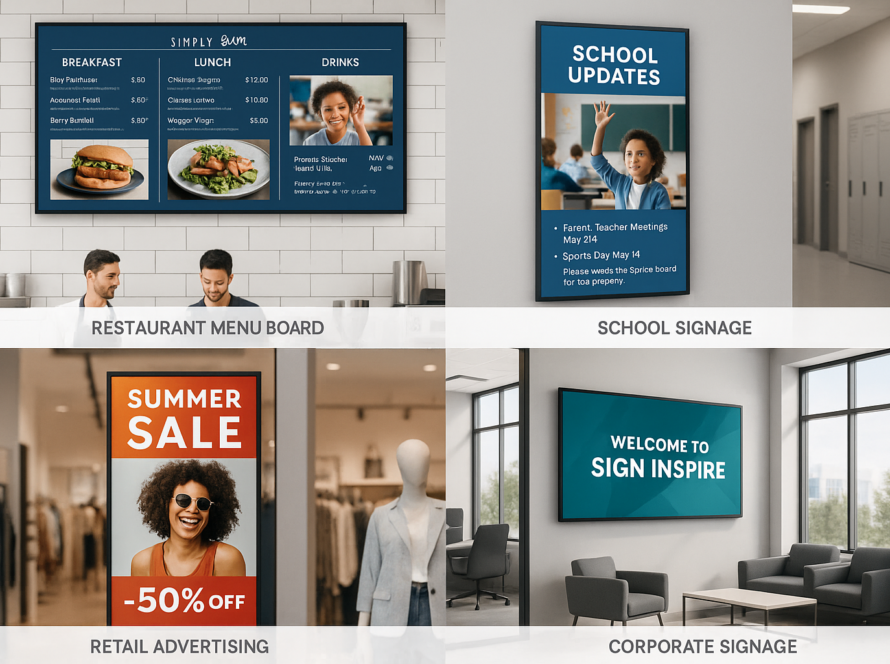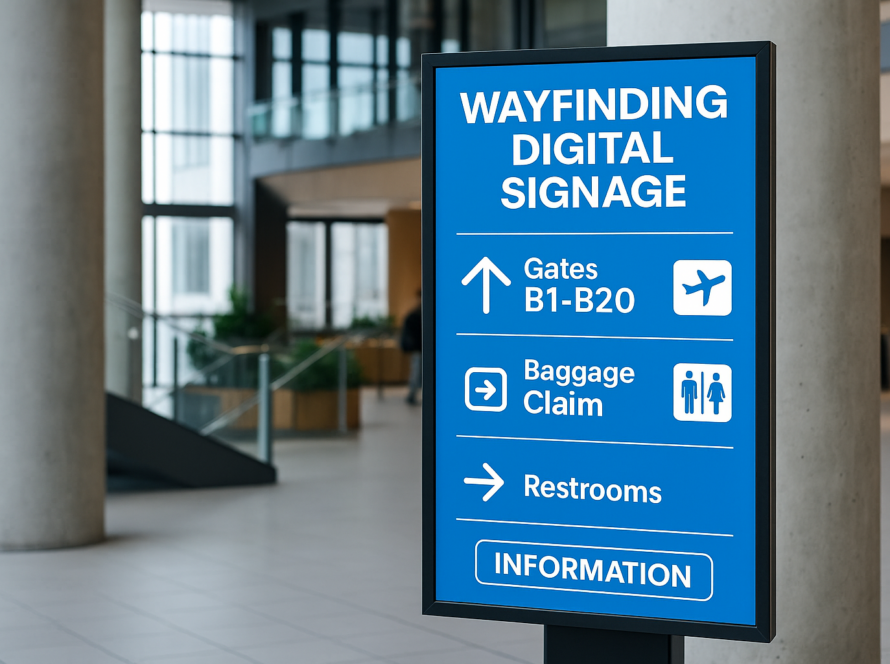The Intelligent Future of Engagement: AI-Powered Digital Signage in Melbourne & Brisbane
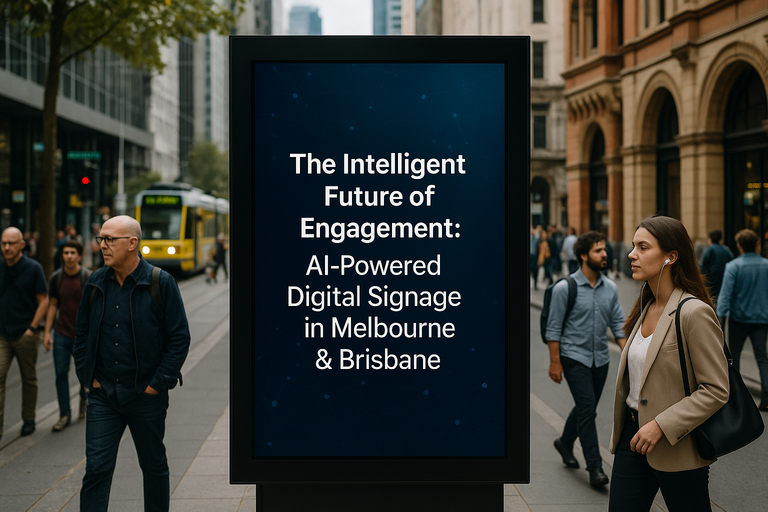
In our visually saturated world, screens are everywhere. From the bustling streets of Melbourne to the vibrant commercial hubs of Brisbane, digital displays have become a standard fixture of the modern landscape. They broadcast menus, advertise sales, and provide information. But are they truly engaging? For years, the promise of digital signage has been to deliver the right message to the right person at the right time. However, the reality has often been a glorified digital poster, looping the same content for everyone. That is, until now. The infusion of Artificial Intelligence (AI) is fundamentally transforming the industry, elevating digital signage from a static broadcaster to an intelligent, responsive communication platform. This evolution is not a distant future concept; it’s happening right now, and businesses seeking a competitive edge are taking notice.
This article explores the profound impact of AI on the world of digital signage. We will delve into the evolution from simple screens to smart systems, uncover real-world AI use cases that are redefining customer engagement, and discuss what to look for when searching for an expert `digital signage service near me`. Whether you operate in the competitive retail market of Melbourne or the dynamic business environment of Brisbane, understanding this technological shift is crucial for capturing audience attention in a meaningful and effective way.
The Evolution of Digital Signage: From Static Displays to Intelligent Communication
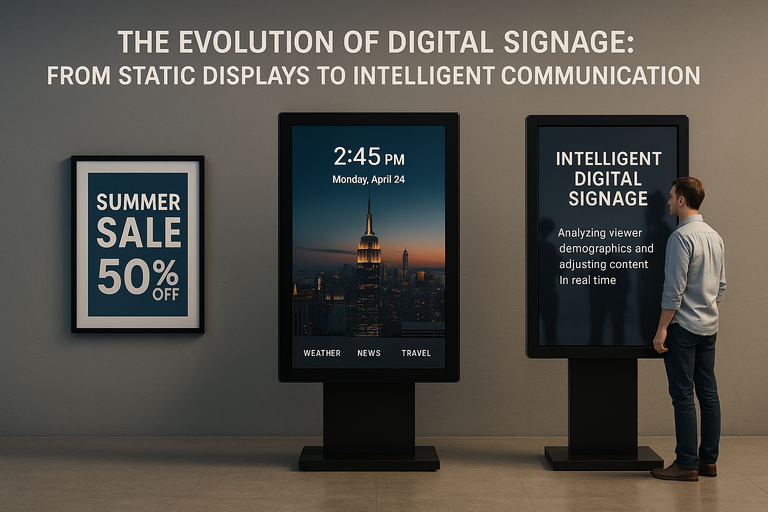
To appreciate the significance of AI, we must first understand the journey of digital signage. Initially, businesses moved from printed posters to basic digital screens, a significant leap that allowed for dynamic content. However, these early systems were cumbersome. Updating content often required manually loading files onto a USB stick and physically plugging it into each screen. The content was generic, a one-size-fits-all approach that failed to consider the specific audience viewing it at any given moment. It was digital, but it wasn’t particularly smart.
The next phase brought networked displays, managed through a centralized Content Management System (CMS). This was a major improvement, enabling remote scheduling and content updates across an entire network of screens from a single computer. A marketing manager in a Sydney head office could schedule a promotion to run on their `digital signage melbourne` and `digital signage brisbane` locations simultaneously. This streamlined operations but remained a one-way communication channel. The system was broadcasting *at* people, not interacting *with* them. The content strategy was still based on assumptions about who the audience might be.
Today, we are in the midst of the third and most exciting wave: the integration of AI. Artificial intelligence gives digital signage the ability to perceive, analyze, and react to its environment in real-time. By leveraging technologies like machine learning and computer vision, a screen can now understand its audience and autonomously decide what content is most relevant. This marks the pivotal shift from broadcasting to genuine communication, creating a personalized and interactive experience that finally delivers on the long-held promise of the medium. The modern `digital signage` solution is no longer just a screen; it’s an intelligent endpoint in a sophisticated marketing ecosystem.
AI in Action: Real-World Use Cases for Smart Digital Signage
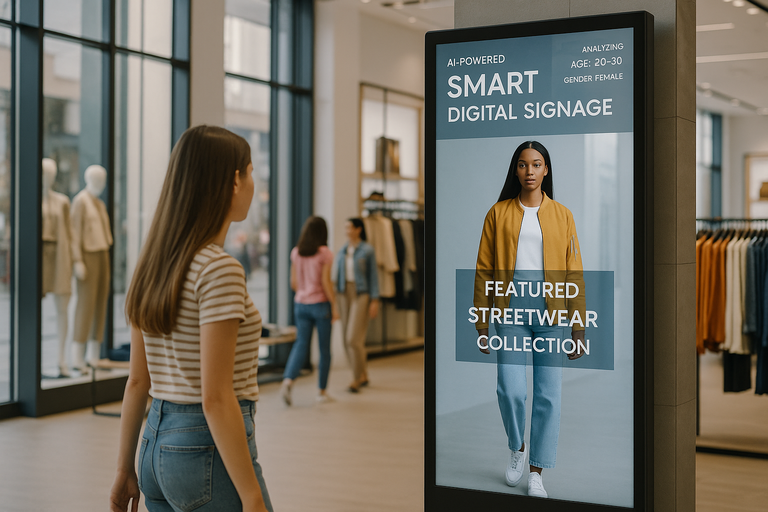
The theoretical benefits of AI are compelling, but its true power is revealed in practical application. AI is not a single feature but a collection of capabilities that work together to make digital signage more effective, efficient, and engaging. It transforms passive screens into active assets that contribute directly to business objectives. From retail to corporate communications, the use cases are vast and growing, demonstrating a clear return on investment for those who adopt this powerful technology.
Dynamic Personalization at Scale
The holy grail of marketing is personalization. AI makes this possible on a massive scale without compromising individual privacy. Using anonymous video analytics (AVA), AI-powered cameras can detect general demographic data of the viewing audience, such as age range, gender, and even expressed mood. Crucially, this is done in real-time without recording images or storing any personally identifiable information, ensuring full compliance with privacy standards. The AI processes this data on the fly to trigger the most appropriate content.
Imagine a fashion retailer with a prominent `digital signage melbourne` storefront in a busy shopping centre. On a Saturday morning, the AI detects a high volume of millennial and Gen Z shoppers. It automatically prioritizes content featuring the latest streetwear collection. Later in the day, as the demographic shifts to older shoppers, the display seamlessly transitions to showcase premium, sophisticated apparel. If the system detects a group of people looking stressed or hurried, it might display a calming brand video instead of a hard-sell promotion. This level of real-time adaptation ensures that the `digital signage` is always relevant, significantly increasing its impact and effectiveness.
Predictive Content and Advanced Analytics
Beyond simply reacting to the immediate environment, AI can predict future behaviour. By analyzing historical engagement data, sales figures from POS systems, and external data feeds like weather forecasts and local event schedules, machine learning algorithms can determine which content will be most effective at a specific time and location. This allows for a proactive rather than reactive content strategy.
Consider a quick-service restaurant looking to optimize its `digital signage brisbane` menu boards. The AI system analyzes past sales data and learns that on hot days, sales of cold drinks and salads spike. When the local weather API forecasts a heatwave, the system automatically gives more screen time to these items, even creating promotional bundles. During a major sporting event at a nearby stadium, it can predict a rush of customers and feature quick-to-prepare meal deals to improve throughput. This predictive capability turns the `digital signage` into a powerful sales tool. Furthermore, the analytics provided by AI go far beyond simple impression counts. Marketers can now access data on audience dwell time, attention time, and content-specific engagement rates, providing invaluable insights to refine their strategies and prove the ROI of their `digital signage` network.
Creating Interactive and Responsive Experiences
One of AI’s most exciting contributions to digital signage is in fostering direct interaction. This transforms the screen from something you look at into something you engage with. By integrating AI-driven technologies like natural language processing (for voice commands) and gesture recognition, digital signs become interactive concierges, salespeople, and entertainers.
Picture an interactive wayfinding kiosk in a large Melbourne hospital. A visitor can simply ask, “Where is the cardiology department?” The `digital signage` understands the query and displays a clear, animated map with directions. In a Brisbane museum, a child could interact with a video wall exhibit by using hand gestures to explore a 3D model of a dinosaur skeleton. These experiences are not only highly functional but also memorable, creating a positive brand association. This level of interactivity makes the technology incredibly sticky and useful, justifying the search for a specialized `digital signage service near me` that can deliver these complex, integrated solutions.
Choosing the Right AI-Powered Digital Signage Partner in Australia

As the technology becomes more sophisticated, the provider you choose becomes more critical. Implementing an AI-powered digital signage network is not a simple DIY project; it requires a partner with deep expertise in hardware, software, and data science. Whether your business is centred in one city or has a national footprint, your choice of provider will be the single most important factor in the success of your project. The goal is to find a partner who can provide a robust, scalable, and ethically sound solution.
Expertise in Both Hardware and AI Software
An effective AI digital signage solution requires a seamless fusion of durable hardware and intelligent software. The physical screens must be commercial-grade, capable of running 24/7 in various environments. The media players need sufficient processing power to run complex AI algorithms. However, the software is the true heart of the system. Look for a provider that offers a comprehensive, integrated platform with a user-friendly CMS. This system should make it simple to manage your content, set up AI-driven rules, and view sophisticated analytics without needing a data science degree. A top-tier provider ensures the hardware and software are perfectly optimized to work together, whether you’re deploying a single interactive kiosk or a nationwide network of displays.
A Commitment to Data Privacy and Ethical AI
The use of cameras and sensors in digital signage necessitates a serious conversation about privacy. When searching for a provider, especially for audience analytics, it is imperative to prioritize those who are transparent about their data practices and committed to ethical AI. Reputable providers in Australia operate on a “privacy-by-design” principle. Their systems use anonymized data, meaning they analyze pixels to determine patterns and demographics without ever recording or storing images or personal information. Ensure any potential partner is fully compliant with the Australian Privacy Act and can clearly articulate how they protect consumer privacy. This is a non-negotiable factor for maintaining customer trust, particularly in aware markets like Melbourne and Brisbane.
Local Support and Scalability
When you are investing in a critical communication tool for your business, ongoing support is paramount. While many companies exist globally, having a partner with a strong presence in Australia makes a significant difference. When you need on-site installation, maintenance, or hands-on training for your `digital signage melbourne` team, a local or national provider is invaluable. A partner with offices or technicians in key hubs like `digital signage brisbane` can provide faster response times and a deeper understanding of the local market. Moreover, the solution must be scalable. Your needs will evolve, and your `digital signage` network should be able to grow with you. A great partner will offer a solution that can scale from a single pilot screen to hundreds of locations across the country, with the AI models becoming smarter and more effective as the network expands.
Conclusion
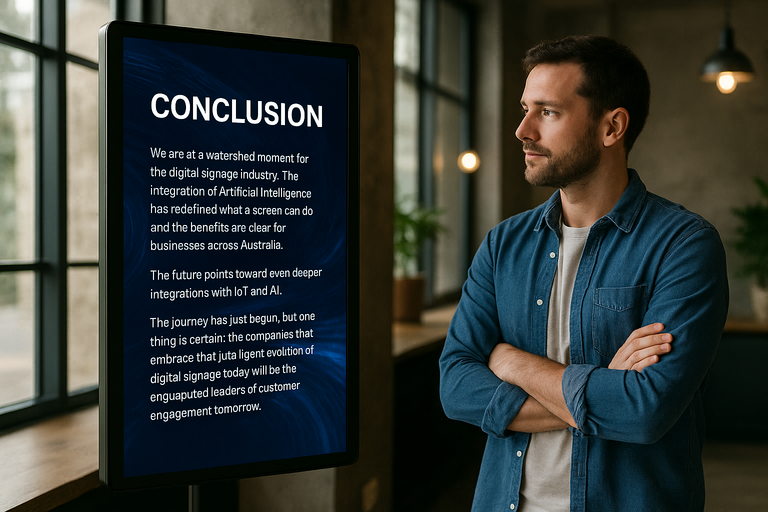
We are at a watershed moment for the digital signage industry. The integration of Artificial Intelligence has propelled the technology beyond simple displays, transforming them into intelligent and interactive platforms for communication. This is not a minor upgrade; it is a fundamental redefinition of what a screen can do. By leveraging AI to deliver personalized content, predict audience behaviour, and create engaging interactive experiences, businesses can finally cut through the noise and connect with customers in a way that is both meaningful and measurable.
The benefits are clear: dramatically enhanced customer engagement, deep analytical insights that provide clear ROI, and streamlined operational efficiency. For businesses across Australia, from the laneways of Melbourne to the riverfronts of Brisbane, the question is no longer *if* they should adopt AI-powered digital signage, but *how* quickly they can do so.
The future points toward even deeper integrations with the Internet of Things (IoT), augmented reality, and AI that can not only personalize but also autonomously generate creative content. The journey has just begun, but one thing is certain: the companies that embrace this intelligent evolution of `digital signage` today will be the undisputed leaders of customer engagement tomorrow.

